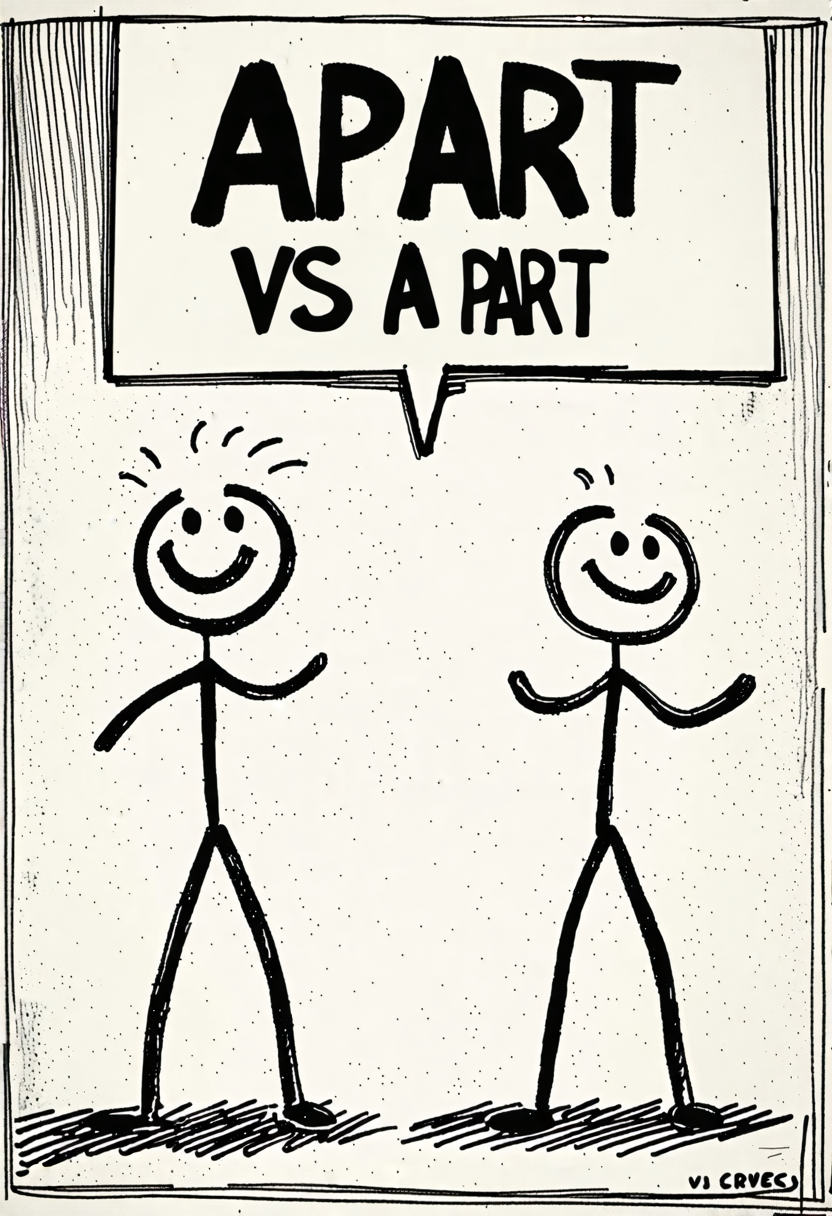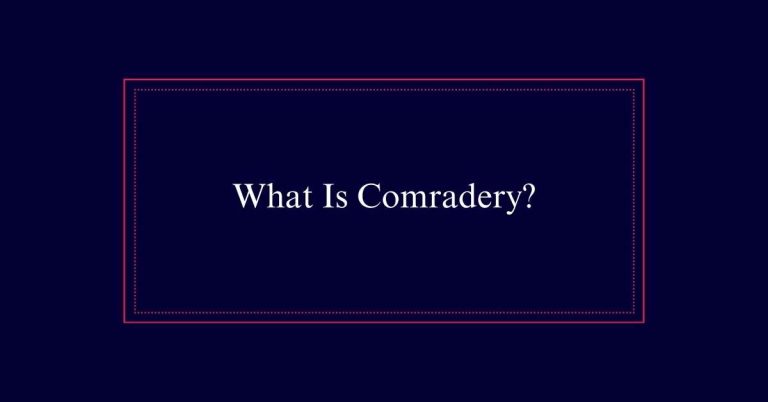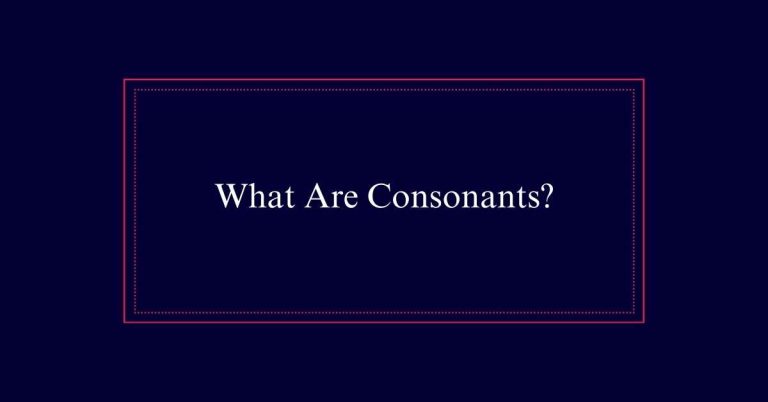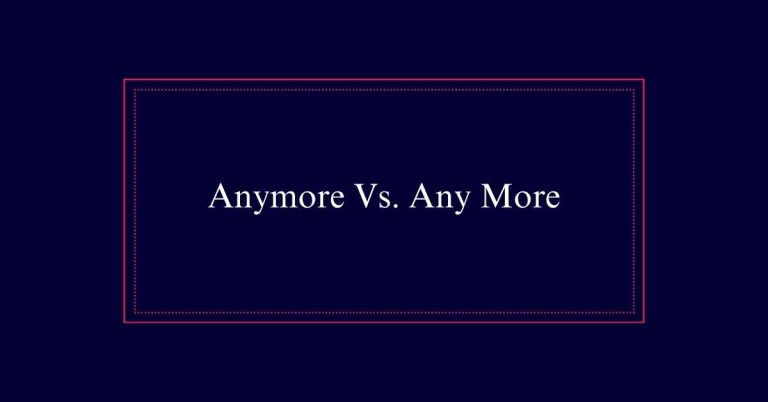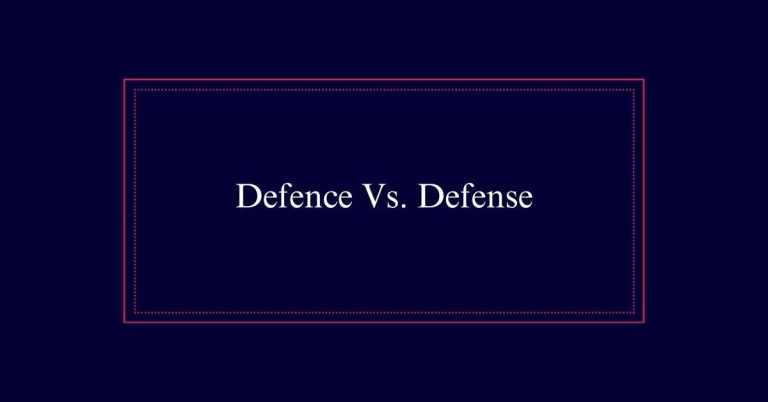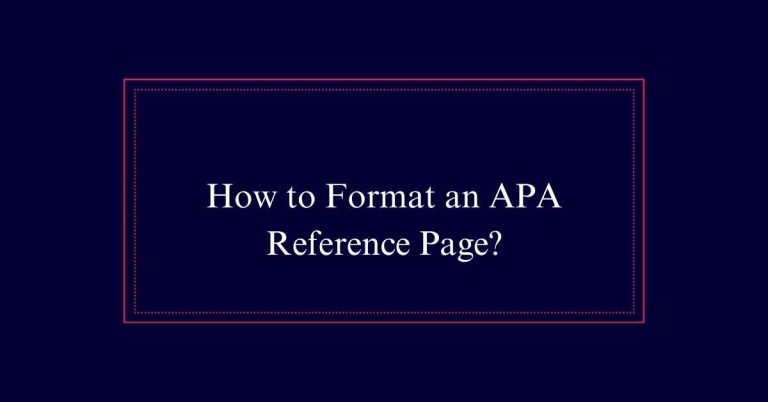Apart vs. a Part
‘Apart’ and ‘a part’ are often confused, but they have distinct meanings. ‘Apart’ is an adverb indicating separation or distance, such as in physical space, emotions, or time. For example, ‘The two houses are far apart.’ It also can mean ‘besides’ as in ‘Apart from that, I’m fine.’ On the other hand, ‘a part’ is a noun phrase meaning a piece or component of a larger whole, like ‘She is a part of the team.’
Understanding ‘Apart’
In English, ‘apart’ is primarily used as an adverb to indicate separation or distance, whether physically, figuratively, or temporally. This means it describes things being distinct or isolated from one another.
For example, ‘The twins were born two years apart’ indicates a temporal separation. Additionally, ‘apart’ can imply a figurative distance, such as in ‘Their views on politics are worlds apart.’
It can also mean to divide into pieces, as in ‘The machine was taken apart for cleaning.’ In addition, ‘apart from’ functions as a preposition meaning besides or except for, like in ‘Apart from the weather, the trip was enjoyable.
Physical Separation Uses
When describing physical separation, ‘apart’ indicates that objects or people are distanced from each other. For instance, ‘The two buildings stand 100 meters apart’ clearly shows physical space between them.
Similarly, ‘The family members live miles apart’ emphasizes geographical distance. In the context of physical disassembly, ‘apart’ can also mean disassembling something into pieces, such as ‘He took the machine apart to fix it.’
These examples underscore the importance of using ‘apart’ to denote spatial separation or disintegration. Incorrectly using ‘a part’ in these contexts would alter the intended meaning, leading to confusion.
Figurative Separation
Figurative separation with ‘apart’ highlights emotional or ideological distances between individuals or groups. This usage conveys more than just physical distance; it captures diverging beliefs, values, or feelings.
For example, saying ‘They grew apart over time’ suggests an emotional drift. Similarly, ‘Their opinions are worlds apart’ indicates a significant difference in viewpoints. Using ‘apart’ in these contexts helps articulate the depth of separation beyond the tangible. It underscores how differences can create gaps in relationships and understanding.
Mastering this distinction allows for more nuanced expression, making your writing clearer and more impactful. Remember, ‘apart’ in figurative contexts emphasizes division, while ‘a part’ implies inclusion within a whole.
Temporal Separation
How does ‘apart’ convey separation in the context of time?
‘Apart’ can indicate an interval or distance between events, emphasizing a temporal gap. It helps to create a sense of duration or delay between occurrences.
- Example: “The meetings were scheduled a month apart.”
- Example: “Their birthdays are just a few days apart.”
- Example: “The concerts happened years apart.”
- Example: “The research papers were published decades apart.”
- Example: “The two wars took place centuries apart.”
Prepositional Use of ‘Apart’
‘Apart’ can also function as a preposition, typically meaning ‘besides’ or ‘except for.’ This usage helps to exclude or differentiate certain elements from a group. For instance, “Apart from the weather, the event was perfect.” Here, ‘apart from’ isolates the weather as an exception.
| Usage | Example Sentence |
|---|---|
| Excluding | Apart from John, everyone attended the meeting. |
| Differentiating | The project was flawless, apart from a few errors. |
| Specifying | Apart from English, she speaks three languages. |
| Isolating | Apart from his behavior, he is an excellent student. |
Adjective Use of ‘Apart’
In addition to its prepositional use, ‘apart’ can also function as an adjective to describe something that is separate or isolated. This usage is less common but equally important. Employing ‘apart’ as an adjective can add depth and precision to your writing.
Here are some contexts where ‘apart’ as an adjective can be effective:
- To describe a remote or distant location.
- To emphasize distinction between entities.
- To highlight emotional or social isolation.
- To denote a unique or distinct characteristic.
- To specify physical separation within a space.
Using ‘apart’ correctly in its adjective form can sharpen your communication. It guarantees clarity and precision, avoiding potential misunderstandings. Mastery of its use will enhance your overall writing skills.
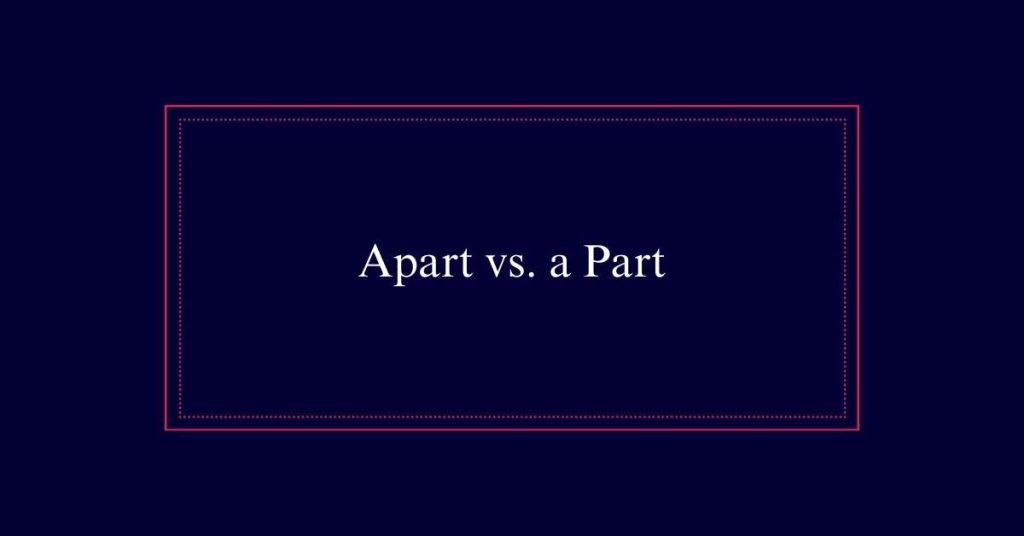
Definition of ‘A Part’
Defining ‘a part’ involves recognizing it as a combination of the article ‘a’ and the noun ‘part,’ signifying a piece or component of a whole. This term emphasizes inclusion within something larger.
For instance, a part of a machine refers to one piece within the entire apparatus. Similarly, a part of a project indicates a specific segment of the overall effort. The usage of ‘a part’ is also common in the arts, denoting an actor’s role in a play or film.
Understanding this distinction helps in identifying contexts where something is integrated into a larger entity, contrasting sharply with the separative connotation of ‘apart.’
Common Contexts for ‘A Part’
Common contexts for ‘a part’ often include references to components within larger systems, such as pieces of machinery or segments of projects. This usage highlights the integral role of smaller elements within a whole.
For instance:
- A part of a machine, like a gear or bolt.
- A part of a project, such as a specific task or milestone.
- A part of a document, including a chapter or section.
- A part of a community, referring to an individual or group contributing to the larger society.
- A part of a plan, detailing a particular action or step.
Understanding these contexts is vital for accurate and effective communication. Each example underscores how ‘a part’ signifies an essential piece contributing to the bigger picture.
Actor’s Role Context
An actor’s role in a play, musical, or film is often referred to as ‘a part.’ This term highlights the actor’s contribution to the overall production.
An actor’s part is a specific character or role that they portray. It represents a piece of the entire narrative. Each part is crucial to the story.
Directors and casting agents assign parts based on the actor’s skills and suitability for the character. Actors study their parts, memorize lines, and develop their characters.
The term ‘a part’ emphasizes the actor’s integration into the larger ensemble. Understanding this context helps avoid confusion with ‘apart,’ which means separated.
Memory Aids for Usage
To help differentiate between ‘a part’ and ‘apart,’ consider employing memory aids. These can simplify understanding and guarantee correct usage in writing and speech.
- Visual Separation: ‘Apart’ includes the word ‘part’ but is separate. It signifies separation.
- Role Context: Use ‘a part’ when referring to a piece of something, like a part in a play.
- Preposition Pairing: ‘A part’ often follows prepositions like ‘of.’
- Physical Distance: Think of ‘apart’ as indicating distance, either physical or metaphorical.
- Exception Clause: ‘Apart from’ means ‘besides’ or ‘except for,’ helping distinguish its unique usage.
Frequently Asked Questions
Are There Any Mnemonic Devices to Remember ‘Apart’ Vs. ‘A Part’?
To remember the difference, use this mnemonic: “Apart” indicates separation—think “a part” pulled away. For “a part,” recall it as “a piece of the whole.” This helps distinguish their distinct meanings easily.
What Are Some Common Phrases That Use ‘Apart’?
Common phrases using ‘apart’ include “fall apart,” “tear apart,” “drift apart,” “set apart,” and “take apart.” These phrases often indicate separation, disintegration, or distinguishing differences in various contexts, both physical and metaphorical.
Can ‘Apart’ and ‘A Part’ Ever Be Interchangeable?
‘Apart’ and ‘a part’ are not interchangeable. ‘Apart’ means separate, while ‘a part’ means a piece of something. Using them incorrectly can confuse readers and distort the intended meaning in both written and spoken communication.
